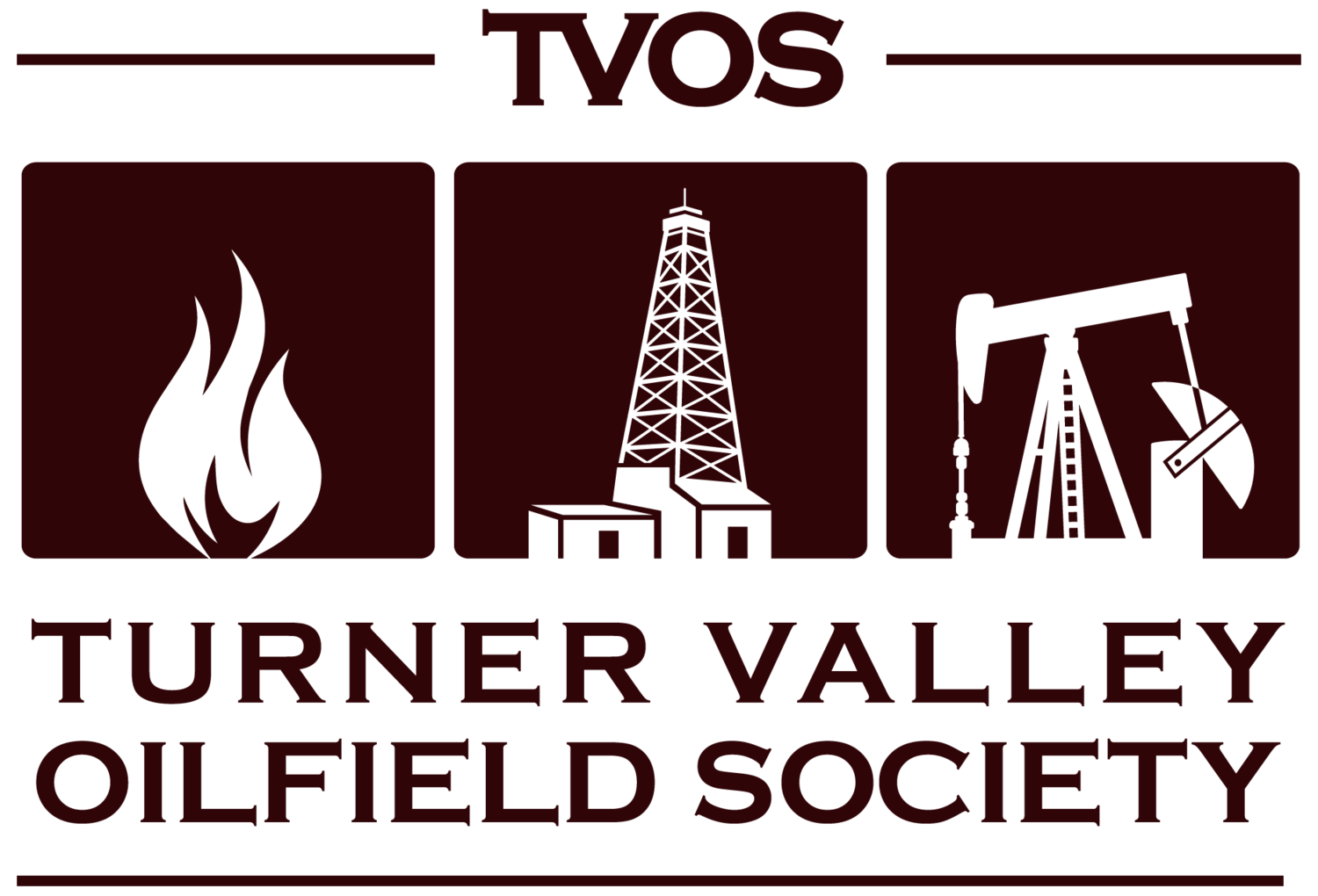Absorption Building History
The purpose of the equipment in this building was to absorb (remove) hydrocarbon liquids (propane, butane, condensate) from the natural gas produced by wells in the Turner Valley oilfield. The absorbing fluid was an oil, like kerosene. This process was developed in the early 1910s and variations of it were used globally until alternative processes were developed in the 1970s.
The first Absorption Building on this site was a wooden frame building built between 1916 and 1919 and housed the first lean oil absorption equipment in Canada. This equipment removed hydrocarbon liquids from the raw gas produced from Dingman wells #1&2. At the time there was a market for the gasoline type hydrocarbon liquids but not the natural gas. Some of the natural gas was used on site in boilers to generate steam but most of the gas was flared. Any incidental recovery of propane or butane at this time was also flared. This initial building burned down Oct. 20, 1920 and nothing remains of this installation.
New absorption facilities were subsequently re-built in 1921 at a different location and housed in what later became the Light Plant (now the Alberta Culture Welcoming Centre). These facilities were shutdown in 1927 after the Royalite #4 well discovered high pressure sour gas.
The current Absorption Building (the third on this site) also used an oil to recover hydrocarbon liquids and became operational in 1933 along with the directly associated equipment in the adjacent Gasoline Plant. This is a metal frame building and surrounds the base of five absorption towers 1.5m (5 feet) diameter & 15m (50 feet) tall. The building measures 7.6m (25 feet) by 15m (50 feet) and is 8.5m (28 feet) high at the roof peak. Interior floor space is extremely limited basically providing weather protection for critical gauges and meters. The corrugated steel walls are not insulated so windows/doors were open in summer for cooling while steam heated radiators provided warmth in winter.
Since 1933 the gas processed in this building was sour (that is, it contained hydrogen sulphide, H2S) and came from the inlet compressors at a pressure of around 2275 kilopascals (330 psi). In 1933 this "high pressure" absorption process in sour gas service was a first in Canada. Notably, all the processing equipment in this building was made in Canada. Up to 2.8 million cubic metres per day (100 million cubic feet per day) was processed through this equipment. The maximum recovery of such hydrocarbon liquids (propane, butane and condensate) was extremely important in supporting the WWII war effort.
After inlet compression the gas is hot, but it cools considerably through the underground pipelines to reach the Absorption Building. The vessels on the east side of this building are known as the Inlet Knockout Drums, so named because they collected (or knocked out) any condensed liquids from the cooled gas. The Outlet Knockout Drums on the west side of this building collected oil droplets carried in the sour gas exiting the absorbers before going to the Scrubbing Plant.
This building was in continuous service until 1985 when the Turner Valley Gas Plant was decommissioned.
An operator and helper managed the equipment in this building until the early 1960s when staffing was reduced to a single operator. The operator ensured the proper pressures and volumes were maintained and changed measurement charts each day. The helper was primarily responsible for area cleanliness.
Author – A. Lambden, P.Eng.
References:
➢ Turner Valley Gas Plant Site and Building History – David Finch, March 1998
➢ Waste to Wealth A History of Gas Processing in Canada – Fred Stenson
➢ Hell's Half Acre Early Days in the Great Alberta Oil Patch – David Finch
➢ Corridors of Time – Aubrey Kerr
➢ The Treasure-Seekers The Men Who Built Home Oil – Philip Smith
➢ Turner Valley Oilfield Society historical documents
➢ Personal experience at site during plant operation


